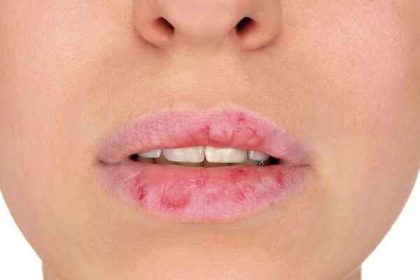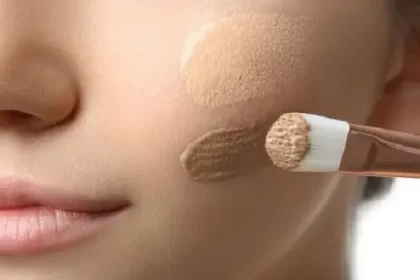You have probably heard many times that having a proper skin routine is how effective it is in the health and beauty of the skin. But has anyone ever told you that smooth and glowing skin can’t just be the result of using topical products? The fact is that your diet, especially the types of vitamins, plays an important role in determining the health of your skin. On the other hand, even if your skin routine products contain a certain type of vitamins, they will have a much greater effect. In this article to examine the benefits Vitamin A for the skinWe deal with everything from acne scar treatment to wrinkle reduction. We also explain from what sources, how and how much you should get this useful vitamin daily so that it works wonders for your skin. Stay with us until the end.
What is vitamin A?
Before examining the properties and side effects of vitamin A, it is better to have a brief definition of this vitamin. According to the National Institutes of Health, vitamin A is the name of a group of retinoids. In fact, the term retinoid refers to three different forms of vitamin A: retinol, retinal (or retinaldehyde) and retinoic acid; All of which have similar properties and benefits for the skin.
The difference between these three modes is in their conversion process, which takes place after use on the skin, and subsequently determines how strong they are. Retinoic acid is the most powerful form of vitamin A and is the one found in very strong skin products. Retinols are the weakest, and retinaldehyde is in the middle of the two.
Properties of vitamin A for the skin
Whether vitamin A reaches your body through food and supplements, or whether you use vitamin A ointment for the skin or other topical lotions and creams containing it, it has many properties and benefits for your skin. It can even solve certain skin problems in some cases. In this section, we will examine the effect of vitamin A on the skin.

-
Prevent premature aging
When you eat foods containing beta-carotene and provitamin A carotenoids, their antioxidant properties eliminate the free radicals responsible for collagen breakdown. Therefore, the first effect of vitamin A for the skin is that there will be no more fine lines and wrinkles and, as a result, premature aging of the skin.
-
Protect the skin from the sun
Consuming adequate amounts of vitamin A can protect your skin from the sun’s UV rays. In fact, vitamin A makes your skin less sensitive to the sun and from sunburn Brown spots on the skin protects.
-
Stimulation of regeneration of healthy cells
The carotenoids in vitamin A (retinol and retinoic acid) are vital for the production of healthy cells. In addition, vitamin A is a known stimulator of fibroblasts, or cells responsible for firming the skin at the dermis level.
In fact, vitamin A causes the production of healthy cells that strengthen the outer layer of the skin (the first barrier against infections, bacteria and pollution). In the same way, the lack of carotenoids and vitamin A can have a negative effect on your skin and lead to problems such as sores, dryness or itchy skin.
-
Reduce and smooth skin wrinkles
There are a variety of vitamin A ointments for the skin that are prescribed by dermatologists and used topically. Retinol and retinoic acid are proven ingredients that fight the early signs of aging. These compounds help generate new cells that rebuild collagen that may have been broken down by external factors such as UV rays and pollution.

-
Radiance and uniform skin color
Using creams containing vitamin A can reduce pigmentation and make your skin glow. These creams lead to cell regeneration. As a result, healthier, younger and newer cells come to the surface of the skin, replace the damaged and dead cells and give a uniform color to the skin.
The retinoids in vitamin A creams block and inhibit the enzyme that produces melanin (skin pigments). Therefore, by reducing melanin production, you will have brighter and blemish-free skin.
-
Vitamin A ointment for acne
Types of facial acne It is caused by clogged pores, bacteria, excess sebum or oil, and dead skin cells. In fact, blocked pores are a good place for the growth of acne-causing bacteria (propionibacterium). Vitamin A creams stimulate the production of new cells and reduce the production of skin fat, which prevents pimples and acne.
Whether you use over-the-counter or dermatologist-prescribed retinoid creams and ointments, these products can reduce acne and prevent it from reappearing. Because they have anti-inflammatory properties. Also, as we mentioned before, vitamin A can help remove dead skin cells and thus prevent pores from closing. Scientific research has proven that topical retinoids and vitamin A are effective in treating acne for adolescent and adult skin.
Tip: If you think you need a stronger topical vitamin A cream, ask your dermatologist to prescribe one. These prescription drugs have a more effective and stronger dosage than over-the-counter creams and usually include Retin-A in their name.

Is vitamin A good for all skin types?
Usually, everyone with any type of skin can use retinol or vitamin A topically, but light skin (white and blonde) or sensitive skin should be very careful; Because it may be more difficult for their skin to adapt to this strong substance.
In addition, retinol is not recommended for people whose skin is excessively exfoliated (due to home or medical treatments) or people whose skin has been damaged by sunlight. It should also be noted that pregnant women should not use strong retinol or vitamin A.
How do we know if we have vitamin A deficiency?
There are several signs that can indicate whether your body is getting enough vitamin A or not. Some of these symptoms that may occur due to vitamin A deficiency include:
- Eczema and excessive dryness of the skin
- Bumps on the skin due to excess keratin in the hair follicles
- Slow healing of acne scars and scars after surgery or diabetic wounds
If you have any of these symptoms, go to the next section immediately and get the vitamin A your body needs!
Vitamin A sources
Vitamin A needed by the body and facial skin can be supplied through various sources, including food or in the form of topical creams. Retinoids and carotenoids are the main forms of vitamin A that should be consumed. In this section, some of the main sources of this valuable vitamin are given:
-
Vitamin A in foods
Eggs, salmon, shrimp, cod liver oil, beef liver, and dairy products such as milk, cheddar cheese, and butter are rich in retinoids. Carotenoids are also found in plant foods such as carrots, green leafy vegetables, sweet potatoes, tomatoes, and also in fruits such as plums, apricots, papayas, and mangoes.

-
Vitamin A in supplements and tablets
In addition to the foods we mentioned, vitamin A can be taken as a supplement or pill and benefit from its properties for the skin. This vitamin can be purchased in various forms such as retinoids such as retinyl acetate or retinyl palmitate. In addition, you can get beta-carotene, which is a carotenoid, or buy some supplements that are a combination of retinoids and carotenoids.
Vitamin A tablets for facial skin are usually sold in the form of capsules. In addition to these capsules, vitamin A is often found as an ingredient in multivitamin supplements. Also, some foods such as milk and breakfast cereals are enriched with this vitamin.
-
Vitamin A oil for skin
Vitamin A oil is sold in the form of serum and capsules that are opened and used on the skin. If you are going to use vitamin A oil on your skin, we recommend that you apply a small amount of oil on a small area (for example, the inside of your arm). If you are not allergic to the oil after a few hours, you can use it on your whole face and neck.
-
Vitamin A in topical creams
a wide spectrum of Skin care products There are those that have vitamin A. From anti-aging creams to sunscreens, anti-acne ointments and vitamin A enriched oils are just a few examples of products designed and produced specifically for the skin. One of the most famous of these products is vitamin D ointment for facial skin, which most people are familiar with.

How to take vitamin A?
If you’ve never used vitamin A on your face before, it’s best to start with a mild over-the-counter cream. A doctor’s prescription is required to buy strong retinol creams; But if you have not used vitamin A before, it may harm your skin. Over-the-counter retinol creams like retinyl palmitate or retinaldehyde are great to start with.
In order for vitamin A to have its maximum effect on your skin, it must be left on your face overnight until the morning; Because the delicate skin of the face is more permeable at night. So include vitamin A creams in your night skin care routine.
To apply vitamin A to your face, first wash your face with mild detergent and warm water and dry with a clean towel. Wait for 20 minutes and then apply your desired vitamin A cream. If you apply the cream before this time, the remaining moisture may interfere with the vitamin A and cause irritation, redness and flaking of your skin.
Pour a pea-sized amount of vitamin A cream on your fingertip. This amount is enough for the entire face. If you use too much retinol in the beginning, your skin will be damaged and dry. Remember that the skin of the face is more delicate than the skin of other parts of the body.
Next, take about half of the vitamin A cream on your fingers and gently apply it to your forehead. Then apply the rest of the cream with the fingertips of both hands on the skin of your cheeks, chin and around your eyes and massage with small circular movements. It is not a problem to use vitamin A ointment around the eyes; Of course, use the minimum amount for this area, because the skin is thinner.
Retinol creams are thick and take time to absorb into the skin. So wait for 20 minutes and then definitely apply moisturizer on it.

If you have not used vitamin A for your face before, your skin may become dry and flaky after using it. Instead of using retinol cream daily, wait until your skin adjusts to the new cream. So if you applied your vitamin A cream for the first time on Sunday night, wait until Wednesday or Thursday and postpone the second application to one of these two nights. If you have sensitive skin, it is better to have intervals between your vitamin A application of one week.
With continuous use of retinol, the skin loses its sensitivity to the cream and you can use it more. To get the least side effects of vitamin A on the skin, apply vitamin A only twice a week for the first 2 weeks and then 3 times a week for the next 3 weeks. After these 5 weeks, if you do not experience any complications, you can use vitamin A cream or retinol daily.
In the following, we discuss the most important side effects of vitamin A.
Side effects and tips for taking vitamin A
If this is your first time using vitamin A face cream, you may experience some mild side effects. The skin around the eyes or on the cheeks may be slightly red or slightly itchy or irritated. You may also feel that a small part of the skin on your face is being peeled off. These side effects are normal and should disappear 2 to 3 days after applying vitamin A to the face.
Also note that retinol can make your skin very sensitive to the sun’s UV rays. Therefore, during the period of using vitamin A for the skin, don’t forget to use sunscreen with a cream with at least SPF=30. To choose The best sunscreen for all skin types Don’t miss our other article.
Another important point is that your skin may become dry or stretchy when using vitamin A. This is especially true in cold winter weather or when humidity is low (especially if you live in a dry climate). Therefore, if you encounter severe skin dryness while taking vitamin A, increase the amount of moisturizer or hydration that you always apply.
But if your skin becomes very scaly as a result of using retinol cream, be sure to see a doctor. As we mentioned before, people with sensitive skin should be careful when using retinol. Also, no one with any skin type should use strong vitamin A like retinol creams for a long time.

Side effects of excessive consumption of vitamin A
Remember that despite all the benefits and properties of vitamin A, taking too much of it can have side effects. Some of the harmful effects of consuming too much vitamin A include nausea, liver damage, dizziness, blurred vision, frequent headaches, and even coma in serious cases.
Also, if your diet contains too much beta-carotene, your skin will turn yellow or orange. Therefore, avoid consuming a lot of this vitamin without a doctor’s prescription.
final word
In this article, we explained about the properties of vitamin A for the face and how to use it. We also reminded you of the side effects of consuming too much of this vitamin and emphasized that if you intend to use it to treat your skin problems, you must consult a doctor. However, if you have any questions about this, we will be happy to answer you in the comments section, dear and constant companions of Miss and Mr. beauty magazine.
Frequently asked questions about vitamin A
What effect does vitamin A have on facial skin?
Vitamin A is effective for treating acne, wrinkles, pimples and scars and gives the skin a clear and even color.
In this article, we mentioned 3 important symptoms of vitamin A deficiency, such as eczema and excessive dryness, etc. If you see any of these symptoms, you may have a vitamin A deficiency. We also introduced the oral and topical sources of this vitamin in this article.
The correct way to use vitamin A has its own steps. We recommend that you read this article before applying this cream.
References
Byrdie
skinkraft
Chatelaine
wikihow
RCO NEWS
RCO

















